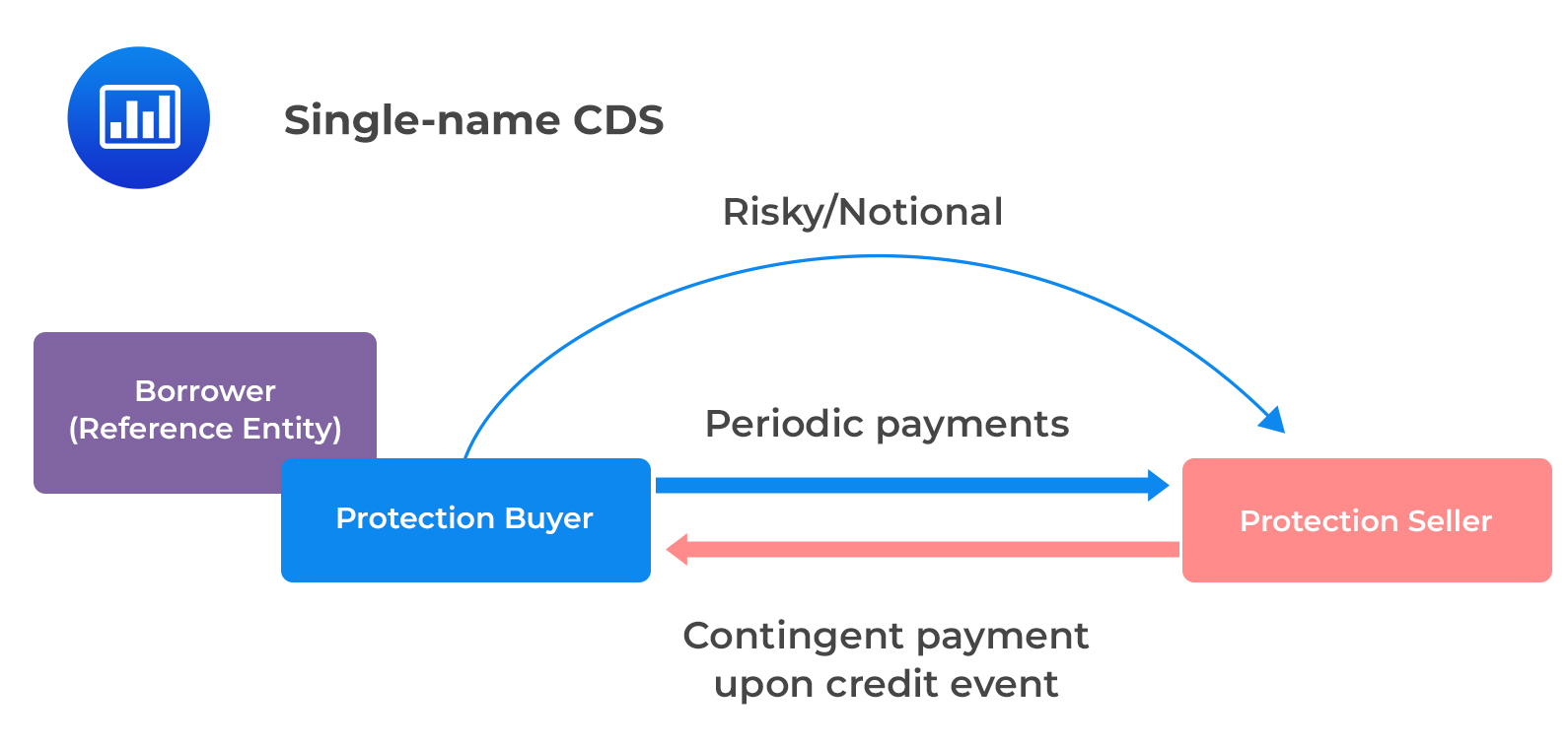Home>Finance>How Do Business Risk And Financial Risk Affect A Firms Capital Structure?


Finance
How Do Business Risk And Financial Risk Affect A Firms Capital Structure?
Modified: December 30, 2023
Understand the impact of business risk and financial risk on a firm's capital structure and learn how these factors affect finance decisions.
(Many of the links in this article redirect to a specific reviewed product. Your purchase of these products through affiliate links helps to generate commission for LiveWell, at no extra cost. Learn more)
Table of Contents
- Introduction
- Overview of Business Risk and Financial Risk
- Relationship between Business Risk and Capital Structure
- Impact of Financial Risk on Capital Structure
- Factors Influencing Capital Structure Decisions
- Determinants of Business Risk
- Determinants of Financial Risk
- Measures Taken to Manage Business Risk
- Measures Taken to Manage Financial Risk
- Case Studies Illustrating the Effect of Business and Financial Risk on Capital Structure
- Conclusion
Introduction
When it comes to managing a firm’s capital structure, understanding the impact of business risk and financial risk is crucial. Business risk refers to the uncertainty and potential for losses that a company faces in its operations, while financial risk refers to the risk of not being able to meet its financial obligations. Both types of risk can have a significant influence on how a company structures its capital, including the mix of equity and debt financing.
In this article, we will explore the relationship between business risk, financial risk, and a firm’s capital structure. We will examine how these risks can affect a company’s decision to utilize debt or equity financing and the factors that influence these decisions. Additionally, we will discuss the measures that companies can take to manage and mitigate business risk and financial risk.
Understanding business risk is essential because it directly impacts a company’s profitability and ability to generate consistent earnings. Business risk can stem from various factors, such as changes in market conditions, competition, technological advancements, legal and regulatory issues, and natural disasters. Companies operating in highly volatile industries may face higher business risk compared to those in more stable sectors.
Financial risk, on the other hand, is related to a company’s ability to meet its financial obligations, including interest and principal payments on debt. Factors that contribute to financial risk include high levels of debt, low profitability, limited cash flow, and fluctuations in interest rates. Companies with a high level of financial risk may face challenges in obtaining additional financing and may be more vulnerable to economic downturns.
The capital structure of a firm refers to the combination of debt and equity that it uses to finance its operations and investments. The decision to use more debt or equity financing depends on various factors, including the risk profile of the company, the cost of capital, and the availability of funding sources. A company with a higher risk profile and stable cash flows may opt for a lower level of debt to minimize the potential financial risk, while a company with a lower risk profile and strong cash flows may be more comfortable taking on higher levels of debt.
Throughout this article, we will delve deeper into the relationship between business risk, financial risk, and a firm’s capital structure. By understanding the interplay between these factors, businesses can make informed decisions about the optimal mix of financing to achieve their financial goals while effectively managing risk.
Overview of Business Risk and Financial Risk
Business risk and financial risk are two fundamental concepts that play a crucial role in determining a firm’s capital structure. Let’s take a closer look at each of these risks:
Business Risk: Business risk refers to the uncertainty and potential for losses that a company faces in its operations. It arises from various factors, including changes in market conditions, competition, technological advancements, legal and regulatory issues, and natural disasters. These risks can impact a company’s profitability and ability to generate consistent earnings. High business risk can lead to fluctuations in revenue, increased costs, and a decline in market share, which can ultimately affect the financial health of the company.
Financial Risk: Financial risk, also known as financing risk, is the risk of not being able to meet a company’s financial obligations. It includes the risk of defaulting on interest and principal payments on debt. Financial risk is influenced by several factors, including the level of debt a company carries, its profitability, cash flow, and exposure to interest rate fluctuations. High financial risk can have serious consequences for a company, including difficulty in securing additional financing, increased borrowing costs, and potential bankruptcy.
It is important to note that business risk and financial risk are interconnected. Changes in business risk can directly impact financial risk. For example, if a company faces a decline in demand for its products or services due to changing market conditions, it may experience reduced revenue and profitability, increasing its financial risk. On the other hand, financial risk factors, such as high debt levels, can amplify business risk by limiting a company’s flexibility and ability to invest in growth opportunities or withstand economic downturns.
Investors and creditors carefully assess a company’s business risk and financial risk when making investment or lending decisions. They analyze the stability of the company’s earnings, its ability to generate cash flow, and its capacity to meet its financial obligations. Moreover, understanding the relationship between business risk and financial risk is vital for management in optimizing a firm’s capital structure.
Next, we will delve deeper into the relationship between business risk and capital structure, as well as the impact of financial risk on capital structure decisions. By understanding these connections, companies can make informed choices in managing their risks and optimizing their capital structure.
Relationship between Business Risk and Capital Structure
The relationship between business risk and a firm’s capital structure is significant as it influences the financing decisions a company makes. The level of business risk that a company faces can impact the amount of debt it is willing to take on and the overall mix of debt and equity financing.
A company with higher business risk may be more cautious about taking on excessive debt. This is because high business risk increases the likelihood of financial distress or bankruptcy if the company’s earnings and cash flows become volatile or decline. In such cases, creditors may be reluctant to lend to the company or may demand higher interest rates, increasing the cost of debt financing.
Conversely, companies with lower business risk and stable cash flows may be more comfortable utilizing debt financing to optimize their capital structure. Lower business risk enhances the likelihood of stable or increasing earnings, making it easier for the company to meet its financial obligations. These firms can take advantage of the tax benefits associated with debt and benefit from the leverage effect, where borrowing allows them to magnify returns to equity shareholders.
It is essential for companies to strike a balance between the level of risk they are willing to take on and the potential benefits of debt financing. By assessing their business risk and understanding how it impacts their ability to generate stable earnings and cash flows, companies can determine the optimal mix of debt and equity in their capital structure.
Furthermore, the availability and cost of debt financing are also influenced by a company’s business risk. Creditors assess a company’s business risk when deciding whether to extend lending and determine the interest rates they charge. Higher business risk implies a higher probability of default, leading to increased borrowing costs and potential difficulty in accessing debt capital markets.
In summary, the level of business risk a company faces directly impacts its capital structure decisions. Companies with higher business risk may opt for a lower level of debt to minimize financial risk, while those with lower business risk may leverage debt financing to optimize their capital structure. By carefully assessing their business risk profile, companies can make informed decisions regarding the appropriate amount of debt and equity in their financing mix.
Impact of Financial Risk on Capital Structure
Financial risk plays a critical role in shaping a company’s capital structure decisions. The level of financial risk a company faces can significantly impact its ability to secure financing and the cost of capital. Therefore, understanding the impact of financial risk on capital structure is crucial for businesses.
One of the key considerations in capital structure decisions is the level of debt a company is willing to take on. Higher financial risk may lead to a more cautious approach towards leveraging the company. Excessive debt can amplify the financial risk by increasing the probability of default and the cost of debt financing. If a company has a high level of financial risk, creditors may demand higher interest rates to compensate for the increased risk, ultimately increasing the cost of borrowing.
Moreover, companies with high financial risk may find it more challenging to access debt capital markets and secure additional financing. Lenders and investors become more cautious when considering businesses with higher financial risk profiles. This can result in restricted access to credit and a limited ability to raise funds, potentially hindering growth opportunities.
Financial risk affects a company’s creditworthiness and credit ratings. Credit rating agencies assess a company’s financial risk factors, such as debt levels, interest coverage ratio, and cash flow stability, to determine its creditworthiness. A company with a high level of financial risk may experience downgraded credit ratings, further increasing the cost of borrowing and negatively impacting the firm’s ability to attract potential investors.
On the other hand, companies with lower financial risk profiles may have better access to debt financing at favorable interest rates. Lower financial risk implies a higher ability to meet financial obligations, which reduces lender concerns and increases confidence in the company’s creditworthiness. As a result, these firms may be able to secure debt financing at lower costs and optimize their capital structure by leveraging debt to enhance returns to equity shareholders.
In summary, financial risk has a significant impact on a company’s capital structure decisions. Higher financial risk can increase borrowing costs, limit access to debt capital markets, and constrain a company’s ability to secure financing. It prompts businesses to strike a balance between leveraging debt for potential benefits and avoiding excessive financial risk that could compromise their financial stability.
Factors Influencing Capital Structure Decisions
The capital structure of a company refers to the mix of debt and equity financing that it uses to fund its operations and investments. Several factors influence a company’s capital structure decisions, and understanding these factors is crucial for businesses to make informed financing choices.
1. Business Risk: Companies with higher business risk tend to be more cautious in their capital structure decisions. High business risk can increase the likelihood of financial distress if earnings become volatile or decline. As a result, businesses may opt for a lower level of debt to minimize financial risk and ensure their ability to meet financial obligations.
2. Financial Risk: The level of financial risk a company faces also plays a significant role in capital structure decisions. Higher financial risk can increase the cost of debt financing and make it more challenging to secure additional funding. Businesses with lower financial risk may be more comfortable utilizing debt financing to optimize their capital structure.
3. Cost of Capital: The cost of capital, which includes the cost of debt and equity, influences capital structure decisions. Companies strive to minimize their cost of capital to maximize their profitability and shareholder value. Finding the right balance between debt and equity financing is crucial to achieve an optimal cost of capital.
4. Stability of Earnings and Cash Flows: Companies with stable earnings and cash flow are more likely to have a higher debt capacity and can use debt financing more effectively. Stable earnings provide confidence to creditors that the company will be able to meet its financial obligations, making it easier to secure debt financing at favorable terms.
5. Tax Considerations: The tax benefits associated with debt financing can influence capital structure decisions. Interest payments on debt are generally tax-deductible, reducing the company’s taxable income. This tax shield can make debt financing more attractive and encourage businesses to utilize debt in their capital structure.
6. Industry and Market Conditions: The industry and market conditions in which a company operates can impact its capital structure decisions. Companies operating in highly regulated or cyclical industries may choose to have a lower level of debt to reduce financial risk. Additionally, prevailing market conditions, such as interest rates and access to capital markets, can influence the availability and cost of debt financing.
7. Company Size and Growth Opportunities: The size and growth prospects of a company also play a role in capital structure decisions. Smaller companies may face more difficulty in accessing debt capital markets and may have higher borrowing costs. Companies with significant growth opportunities may be more willing to take on debt to fund expansion and capitalize on their potential for future earnings growth.
It is important for companies to carefully evaluate these factors when making capital structure decisions. By considering the company’s risk profile, cost of capital, stability of earnings, tax implications, market conditions, and growth prospects, businesses can determine the optimal mix of debt and equity financing that aligns with their strategic objectives and risk tolerance.
Determinants of Business Risk
The level of business risk that a company faces is influenced by various factors. Understanding these determinants is essential for businesses to assess the potential risks associated with their operations and make informed decisions in managing and mitigating business risk.
1. Industry Factors: The industry in which a company operates plays a significant role in determining its level of business risk. Some industries, such as technology or energy, tend to be more volatile and prone to rapid changes in market conditions, technological advancements, and regulatory constraints. Companies operating in these industries face higher business risk than those in more stable sectors.
2. Market Conditions: Market conditions, including supply and demand dynamics, competitive landscape, and customer preferences, can impact a company’s business risk. Fluctuations in market conditions can affect a company’s sales volumes, pricing power, and market share. Market disruptions or shifts can result in decreased revenues, increased costs, and reduced profitability, thereby increasing business risk.
3. Competitive Environment: The level of competition within an industry can contribute to business risk. Intense competition can lead to price wars, reduced market share, and lower profit margins. Moreover, aggressive competitors may introduce new products or services that can make existing offerings less attractive, impacting a company’s viability and profitability.
4. Technological Advancements and Innovation: Technological advancements and innovation are major determinants of business risk. Companies that fail to keep pace with technological changes risk losing market relevance and becoming obsolete. Disruptive technologies can pose significant challenges and increase business risk, especially for companies heavily reliant on outdated or inefficient processes.
5. Regulatory Environment: Regulatory factors, such as changes in laws, regulations, and government policies, can significantly impact a company’s risk profile. Stringent regulations or new compliance requirements can increase costs, restrict operations, or limit market opportunities, thereby affecting a company’s financial performance and business risk.
6. Supplier and Customer Dependency: The reliance on a few key suppliers or customers can increase business risk. Any disruptions in the supply chain, such as delays or shortages, can have adverse effects on a company’s operations and ability to meet customer demand. Similarly, if a company depends heavily on a small number of customers, the loss of a major customer can lead to significant revenue decline and increased business risk.
7. Economic Factors: Economic conditions, including GDP growth, inflation rates, interest rates, and exchange rates, can affect a company’s business risk. Economic downturns can lead to reduced consumer spending, increased business costs, and credit tightening, all of which contribute to higher business risk.
By identifying and assessing these determinants of business risk, companies can proactively address potential challenges and implement strategies to mitigate risk. This may involve diversifying products or markets, adopting new technologies, optimizing supply chain management, staying abreast of regulatory changes, and maintaining strong relationships with suppliers and customers. Effectively managing these determinants can help businesses navigate uncertain environments and enhance their overall resilience to business risk.
Determinants of Financial Risk
Financial risk, also known as financing risk, is influenced by various factors that can impact a company’s ability to meet its financial obligations. Understanding these determinants is crucial for businesses to assess their financial risk profiles and make informed decisions in managing and mitigating financial risk.
1. Debt Levels: The level of debt a company carries is a significant determinant of its financial risk. Higher debt levels increase the risk of default and may result in difficulties in meeting interest and principal payments. Companies with excessive debt may face higher borrowing costs and may find it challenging to obtain additional financing, which can aggravate their financial risk.
2. Profitability: The profitability of a company has a direct impact on its financial risk. A company with low profitability may struggle to generate sufficient cash flows to meet its financial obligations. Earnings and cash flow volatility can also increase financial risk, as it becomes more challenging to forecast and manage cash flows effectively.
3. Cash Flow Stability: The stability of a company’s cash flows affects its financial risk. Companies with stable and predictable cash flows are better positioned to meet their financial obligations. On the other hand, companies with cash flows that are subject to significant volatility may face challenges in managing their financial risk and may be more susceptible to defaulting on their obligations.
4. Interest Rate Fluctuations: Interest rate fluctuations can impact a company’s financial risk, especially if it has variable interest rate debt. Rising interest rates can increase borrowing costs and put pressure on cash flow, making it more challenging to meet interest payments. Companies with a higher proportion of variable-rate debt may face more significant financial risk in uncertain interest rate environments.
5. Liquidity: Liquidity refers to a company’s ability to meet short-term obligations and fund its day-to-day operations. Insufficient liquidity increases financial risk, as it may lead to missed payments on debt obligations or difficulty in covering operating expenses. Companies with limited access to cash reserves or adequate credit facilities may face higher financial risk.
6. Capital Structure: The composition of a company’s capital structure, including the proportion of debt to equity financing, impacts its financial risk. Higher debt levels increase financial risk, as the company has a greater reliance on borrowed funds to meet its obligations. A highly leveraged capital structure can amplify the impact of adverse events on a company’s financial health.
7. Business Performance: The overall performance and outlook of a company’s operations influence its financial risk. Factors such as market share, competitive position, and industry dynamics impact a company’s ability to generate revenue and maintain profitability. Weak business performance increases financial risk and may result in difficulties in meeting financial obligations.
By monitoring and managing these determinants of financial risk, companies can take proactive steps to mitigate potential challenges and improve their financial stability. This may involve debt management strategies, improving profitability and cash flow generation, diversifying funding sources, optimizing capital structure, maintaining adequate liquidity, and closely monitoring interest rate movements. Effectively managing these determinants can help businesses enhance their financial resilience and reduce the likelihood of financial distress.
Measures Taken to Manage Business Risk
Managing business risk is crucial for companies to safeguard their financial stability and ensure long-term success. Here are some measures that businesses can take to effectively manage and mitigate business risk:
1. Diversification: Diversifying the product or service offerings, customer base, and geographic markets can help reduce dependency on a single revenue source. By diversifying, companies can spread their risk and minimize the impact of market fluctuations or disruptions in specific industries or regions.
2. Market Research and Analysis: Conducting thorough market research and analysis helps identify trends, competitive factors, and potential risks. By staying informed about market dynamics, companies can anticipate changes, adjust strategies, and make informed business decisions to mitigate risks and capitalize on opportunities.
3. Risk Assessment and Planning: Conducting comprehensive risk assessments is essential to identify potential risks and their potential impact on the business. Developing a risk management plan that outlines strategies and actions to mitigate risks can help companies proactively prepare and respond to unforeseen events.
4. Financial and Operational Controls: Implementing robust financial and operational controls can help reduce the potential for fraud, errors, and other operational risks. By establishing adequate internal controls, companies can enhance transparency, accuracy, and compliance, ensuring better risk management and safeguarding their assets.
5. Business Continuity Planning: Developing and regularly updating business continuity plans helps companies maintain operations during unexpected disruptions such as natural disasters, cyber-attacks, or other crises. By having plans in place, companies can minimize downtime, protect their reputation, and mitigate the financial impact of business interruptions.
6. Insurance Coverage: Investing in comprehensive insurance coverage can help businesses transfer potential financial risks. Different types of insurance, such as property insurance, liability insurance, and business interruption insurance, can provide protection against various risks and minimize the financial impact of unexpected events.
7. Strategic Partnerships and Alliances: Collaborating with strategic partners and alliances can help companies share resources, expertise, and risks. Partnerships enable companies to leverage each other’s strengths, mitigate risks through shared responsibilities, and pursue growth opportunities that may be otherwise challenging to achieve independently.
8. Continuous Monitoring and Evaluation: Regularly monitoring and evaluating business performance, market trends, and risk factors is vital for effective risk management. By reviewing and adjusting strategies when necessary, companies can proactively address emerging risks and take advantage of new opportunities.
Implementing these measures, businesses can enhance their ability to anticipate and respond to potential risks while minimizing the impact on their operations, profitability, and financial stability. By adopting a comprehensive risk management approach, companies can build resilience, protect their assets, and maintain a competitive advantage in a rapidly changing business environment.
Measures Taken to Manage Financial Risk
Managing financial risk is essential for companies to ensure financial stability and protect themselves from potential financial hardships. Here are some measures that businesses can take to effectively manage and mitigate financial risk:
1. Debt Management: Implementing prudent debt management strategies can help companies mitigate financial risk. This involves carefully evaluating the level of debt and ensuring that it remains within manageable limits. Companies can also consider refinancing existing debt to take advantage of lower interest rates and improve their debt maturity profile.
2. Cash Flow Management: Maintaining strong cash flow is critical for managing financial risk. Companies should closely monitor and forecast their cash inflows and outflows to ensure sufficient liquidity. They can utilize cash flow budgeting, effective working capital management, and timely receivables and payables management to preserve cash and maintain financial stability.
3. Risk Hedging: Utilizing risk hedging strategies can help businesses minimize the impact of adverse financial events. For example, companies can enter into hedging contracts to mitigate the risks associated with fluctuations in interest rates, foreign exchange rates, or commodity prices. Hedging protects against potential losses and provides stability to financial performance.
4. Cost Control: Implementing cost control measures is crucial for managing financial risk. Companies should regularly review and optimize their operating expenses, including fixed and variable costs. Adhering to strict cost management practices helps improve profitability, strengthen financial position, and mitigate the risk of financial distress.
5. Diversification of Revenue Streams: Reducing reliance on a single source of revenue helps mitigate financial risk. Companies can diversify their customer base, expand into new markets or industries, or offer a broader range of products or services. By diversifying revenue streams, businesses can reduce vulnerability to the financial impact of losing key customers or facing industry-specific challenges.
6. Contingency Planning: Developing contingency plans helps companies prepare for potential financial risks and uncertainties. This includes conducting stress tests, scenario analyses, and creating action plans to mitigate the impact of adverse events. Contingency plans allow businesses to respond quickly and effectively to financial crises, limiting the potential damage to their financial health.
7. Financial Forecasting and Risk Assessment: Regular financial forecasting and risk assessment help companies identify and analyze potential financial risks. By understanding their exposure to various risks, such as credit risk, market risk, or liquidity risk, companies can proactively develop strategies to mitigate these risks. Robust risk assessment practices enable businesses to make informed financial decisions and take preventive measures.
8. Regular Financial Reporting and Analysis: Timely and accurate financial reporting is essential for managing financial risk. It enables businesses to monitor key financial indicators, identify trends, and take proactive measures. Regular financial analysis helps companies identify potential financial weaknesses, plan for contingencies, and make necessary adjustments to minimize financial risk.
Implementing these measures allows companies to effectively manage financial risk and strengthen their financial position. By adopting a proactive and comprehensive approach to financial risk management, businesses can safeguard their financial stability, improve resilience, and position themselves for long-term success.
Case Studies Illustrating the Effect of Business and Financial Risk on Capital Structure
Examining real-world case studies can provide valuable insights into the influence of business risk and financial risk on a company’s capital structure decisions. Let’s explore two examples that highlight the effect of these risks:
Case Study 1: Company A – High Business Risk and Conservative Capital Structure
Company A operates in a highly volatile industry with rapidly changing market conditions. The company faces intense competition, technological advancements, and stringent regulatory requirements. These factors contribute to a high level of business risk. Consequently, Company A adopts a conservative capital structure to mitigate potential financial risk.
Despite having growth opportunities, Company A intentionally maintains a lower level of debt in its capital structure. It primarily relies on equity financing to fund its operations and investments. By minimizing debt, Company A reduces the risk of financial distress during periods of revenue volatility or economic downturns. The conservative approach allows the company to maintain better control over its financial obligations.
Case Study 2: Company B – Low Business Risk and Leveraged Capital Structure
Company B operates in a stable industry with predictable demand and steady cash flows. The company has established a strong market presence and enjoys a competitive advantage over its rivals. With low business risk, Company B can comfortably utilize debt financing to optimize its capital structure and enhance returns to equity shareholders.
Recognizing the stable nature of its operations, Company B strategically leverages debt in its capital structure. By taking advantage of the tax benefits associated with debt financing, the company aims to lower its weighted average cost of capital and maximize shareholder value. The prudent use of debt allows Company B to expand its business, invest in research and development, and maintain a competitive edge in the industry.
These case studies highlight the important relationship between business risk, financial risk, and capital structure decisions. The approach to capital structure is heavily influenced by a company’s risk profile and the confidence levels in meeting financial obligations.
In summary, the level of business risk and financial risk directly impact a company’s capital structure decisions. Risk-averse companies in volatile industries may adopt a conservative capital structure by prioritizing equity financing to safeguard against financial risks. Conversely, companies with low business risk and stable cash flows may leverage debt to optimize their capital structure and enhance returns. By carefully evaluating business and financial risks, companies can make informed decisions to strike the right balance between risk management and capital structure optimization.
Conclusion
Managing business risk and financial risk is crucial for companies to maintain financial stability, enhance profitability, and ensure long-term success. The relationship between these risks and a firm’s capital structure is significant, as they influence the financing decisions a company makes.
Business risk, influenced by factors such as industry dynamics, market conditions, and competitive environment, directly impacts a company’s profitability and ability to generate consistent earnings. High business risk may lead to a more conservative capital structure approach, with lower levels of debt to minimize financial risk and ensure the company’s ability to meet financial obligations.
Financial risk, affected by variables like debt levels, profitability, and cash flow stability, is crucial in determining a company’s ability to meet its financial obligations. Higher financial risk can lead to increased borrowing costs, limited access to capital markets, and potential financial distress. Managing financial risk involves implementing effective debt management strategies, optimizing cash flow, and mitigating interest rate fluctuations.
Various factors influence capital structure decisions, including risk profiles, cost of capital, stability of earnings, tax implications, industry and market conditions, and growth opportunities. Companies must carefully evaluate these factors to determine the optimal combination of debt and equity financing that aligns with their strategic goals and risk tolerance.
Through diversification, risk assessment, financial controls, contingency planning, and strategic partnerships, companies can effectively manage business risk. These measures enhance resilience, protect against market volatility, and ensure continuity in operations.
Similarly, measures taken to manage financial risk include prudent debt management, effective cash flow management, risk hedging, cost control, diversification of revenue streams, and regular financial reporting and analysis. Implementing these measures strengthens financial stability, reduces vulnerability to economic downturns, and positions businesses for long-term success.
Examining case studies highlights the impact of business risk and financial risk on companies’ capital structure decisions. It demonstrates that risk profiles directly influence the composition of capital structure, with risk-averse companies opting for more conservative approaches and companies with lower risk profiles leveraging debt to optimize capital structure.
In conclusion, businesses must assess both business risk and financial risk to make informed decisions regarding their capital structure. By effectively managing and mitigating these risks, companies can enhance their financial stability, improve their competitive position, and maximize shareholder value in today’s dynamic business landscape.














